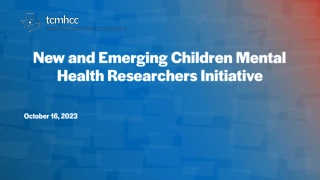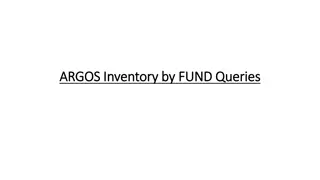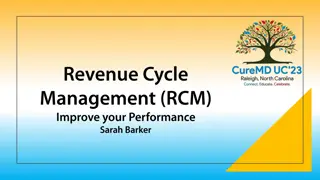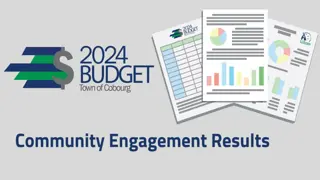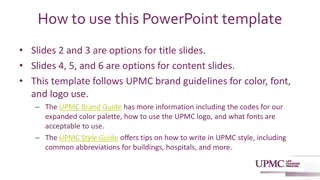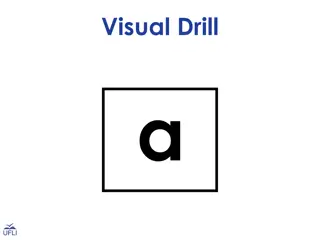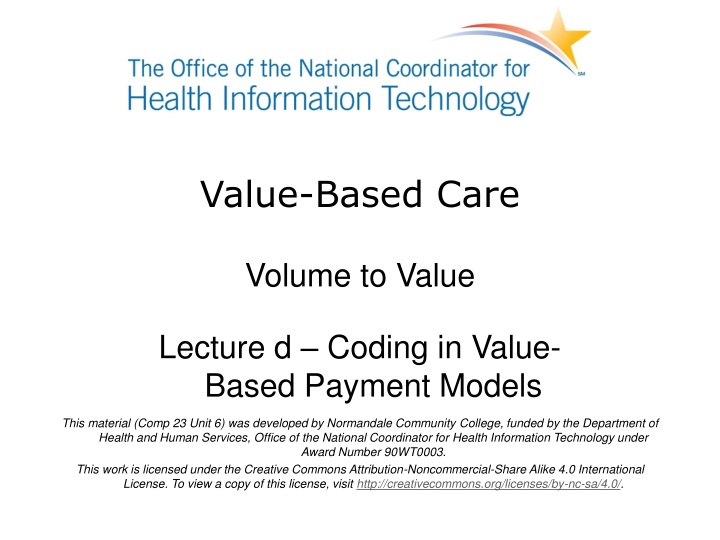
Understanding Coding in Value-Based Payment Models
Dive into the world of value-based care and payment models with a focus on coding and documentation. Learn how proper clinical documentation supports reimbursement, the importance of data in new contracts, and how to adapt workflows for efficient coding. Explore topics like chronic care management and transition of care billing in this comprehensive resource.
Download Presentation

Please find below an Image/Link to download the presentation.
The content on the website is provided AS IS for your information and personal use only. It may not be sold, licensed, or shared on other websites without obtaining consent from the author. If you encounter any issues during the download, it is possible that the publisher has removed the file from their server.
You are allowed to download the files provided on this website for personal or commercial use, subject to the condition that they are used lawfully. All files are the property of their respective owners.
The content on the website is provided AS IS for your information and personal use only. It may not be sold, licensed, or shared on other websites without obtaining consent from the author.
E N D
Presentation Transcript
Value-Based Care Volume to Value Lecture d Coding in Value- Based Payment Models This material (Comp 23 Unit 6) was developed by Normandale Community College, funded by the Department of Health and Human Services, Office of the National Coordinator for Health Information Technology under Award Number 90WT0003. This work is licensed under the Creative Commons Attribution-Noncommercial-Share Alike 4.0 International License. To view a copy of this license, visit http://creativecommons.org/licenses/by-nc-sa/4.0/.
Volume to Value Learning Objectives Discuss how proper clinical documentation supports reimbursement for the cost of delivering care 2
Coding in Value-Based Payment Models Overview Capture accurate and complete data in the EHR Adapt workflows to support efficient data entry Consider legal and ethical issues related to coding 3
The Importance of Data New value-based contracts have elements that require measuring care quality Quality measures are an essential safeguard against the over or under utilization of health care services Quality measures consist of numerators and denominators Certified EHRs provide the platform to enable payments based on quality measurement 4
Coding in a Value-Based System Payment codes are expanding to support value-based payments Wellness visits, including CMS IPPE and AWV, are covered Transitions of care are billable by providers 5
End of Life Planning Effective January, 2016, CMS pays for end-of-life provider to patient consultations through Medicare Kaiser Family Foundation survey reported broad public support (89%) for this new rule Source: Kaiser Family Foundation, 2015 7
Value-Based Care Payments and Profitability In transition from FFS to VBC, some providers face a decrease in profitability Increased time and cost burden of documentation Increased potential to end up in a high cost quadrant for VBM in the current structure Uncertainty about the implementation of MIPS Limited revenue associated with some of the newer codes 8
Improving Efficiency and Profitability Rethink care team roles and implement team-based care Assign tasks to less expensive, but capable staff Medical records, blood pressure checks, health histories and other tasks Care coordination tasks Source: Basu, S., et. al., 2015 9
Value-Based Care and Coding VBC is built on a concept of detailed analysis of what health care is provided and how it improved outcomes ICD 10 coding allows for the ability to use codes for diagnosis that communicate specific and complete information and describe the value of health care delivered 10
IDC 10 and Granularity Chart shows data from a large system with over 15,000,000 claims, and over 50% for unspecified codes IDC-10 provides greater specificity, with codes to enable more granular analysis 11
Roles and Responsibilities Coding accuracy begins with provider documentation Best practice is to use the system and over time, discourage hand notes or other systems that require transcription In many practices this may require a re- engineering of the processes AHIMA recommends a classic PDSA cycle 12
Correct Uses of EHRs Understanding how to document Realizing ethical standards Following computerized prompts for legitimate procedures based on level of care required 13
Possible Misuse - Cloning Cloning: Copying and pasting from one patient record to another without actually documenting what occurred during the specific encounter Source: Horwitz, New York Times, November 2012 14
Possible Misuse - Upcoding Upcoding: Using the EHR to charge for services not performed System prompts or presents a dropdown list of procedures performed that increase the billing amount 15
Possible Misuse Billing Practices Studies raise fears this is widespread especially in hospitals rapid increase in billing after implementation of electronic records Articles documenting possible billing practice misuse raise concerns at the national level Statement from Secretary Sibelius and the Attorney General Source: Horwitz, New York Times, November 2012 16
Recommendations to Avoid Misuse Ensure policies and procedures in place Train all users Employ audit functions 17
Concerns for Other Provider Actions Make sure users understand ethical and legal implications of their actions Make sure users understand that EHRs have strong auditing functions so an investigation can pinpoint who has done what 18
Volume to Value Lecture d - Summary Understand how medical coding affects value-based care, including: Capturing data essentials for quality reporting and incentive programs Coding and the new cost of care Considering roles and responsibilities for coding in the EHR era 19
Volume to Value Lecture d References 1 References 10 FAQs: Medicare s Role in End-of-Life Care. (November 5, 2015). Retrieved from http://kff.org/ Basu, S., MD, PhD; Phillips, R.S., MD; Bitton, A., MD, MPH; Song, Z., MD, PhD; and Landon, B.E., MD, MBA, MSc. (October 20, 2015). Medicare Chronic Care Management Payments and Financial Returns to Primary Care Practices: A Modeling Study. Annuals of Internal Medicine. Retrieved from https://annals.org/ Care Management Services. [Fact Sheet] (May, 2015). Centers for Medicare and Medicaid Services. Retrieved from https://www.cms.gov/ Coplan-Gould, W., Carolan, K. RHIT, Friedman, B. RHIT (July 2011). Re-engineering the Coding Workflow: Assessing Today with an Eye toward Tomorrow. Journal of AHIMA 82, no.7. Retrieved from http://library.ahima.org/ Horwitz, L. (November 22, 2012). A Shortcut to Wasted Time. New York Times. Retrieved from http://www.nytimes.com/ Li, B. (January 18, 2014). Cracking the Codes: Do Electronic Medical Records Facilitate Hospital Revenue Enhancement? Retrieved from http://www.kellogg.northwestern.edu/ 20
Volume to Value Lecture d References 2 References Pear, R. (October 30, 2015). New Medicare Rule Authorizes End-of-Life Consultations. New York Times. Retrieved from http://www.nytimes.com/ Public Strongly Favors End-of-Life Conversations Between Doctors and Patients, With About Eight in 10 Saying Medicare and Other Insurers Should Cover These Visits. (September 30, 2015). Retrieved from http://kff.org/ Span, P. (November 20, 2015). A Quiet End to the Death Panels Debate. New York Times. Retrieved from http://www.nytimes.com/ Umbdenstock, R. (September 24, 2012). Letter to Secretary Sebelius and Attorney General Holder. Retrieved from http://www.aha.org/ Images Slide 6: Care Management Services. [Fact Sheet] (May 2015). Centers for Medicare and Medicaid Services. Retrieved from https://www.cms.gov/ Slide 11: IDC 10 and Granularity, CC BY-NC-SA 4.0 21
Volume to Value Lecture d This material was developed by Normandale Community College, funded by the Department of Health and Human Services, Office of the National Coordinator for Health Information Technology under Award Number 90WT0003. 22


